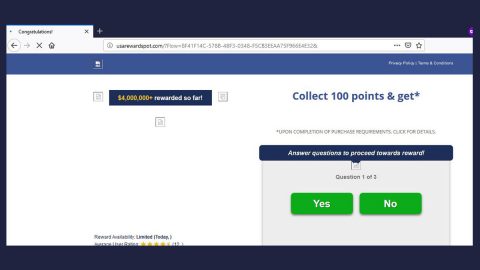What is Cryptowall 3.0?
Cryptowall 3.0 (or Crowti) is a malicious ransomware that encrypts hundreds of files and demands ransom for the encrypted files’ decryption key. It uses Tor and I2P (Invisible Internet Project) anonymity networks that sets the communication between the victims and the hackers making it invisible from researchers and law enforcement officials. It has previous versions namely, Cryptowall, Cryptolocker, CTB Locker. These viruses is known to immediately scan your system once it infiltrates your computer for files extensions like: 3fr, accdb, ai, bay, dbf, doc, docx, jpe, jpg, pfx, ppt, psd, raw, srf, srw, wb2, wps, xls, xlsb, xlsm, and a whole lot more. After looking for these files, it creates a copy for each of those files and encrypts all their contents through the AES CBC 256-bit encryption algorithm, once all the files are encrypted, it deletes the original copy of files, meaning, the only way to encrypt these files is through the decryption key. Once the encryption is done, it will display a full-screen warning message demanding the user to pay the hefty amount in a given period of time, and if the user fails to do so, the amount increases.

It uses Bitcoin as a means to pay the ransom. Always remember, never ever consider paying the ransom, which is the worst thing you can do, unless you have exhausted all possible ways to recover your files. Falling to their trap can lead you to even more trouble since paying them will expose your credit card information. Paying the ransom does not guarantee that you will get your files back so it’s really a lose-lose situation.
How to avoid Cryptowall 3.0?
Avoiding ransomware like this isn’t easy; since they are distributed in different ways such as spam emails, misleading notifications, fake warnings, deceptive pop-ups and ads. To be safe, make copies of your important files located in a different location. Keep an eye on suspicious messages especially from unknown senders that contains attachments or links, their grammar and typos gives them away, so if you receive messages like this, it’s best to ignore and delete it.
File encryption is not in itself a malicious process, that’s why antivirus programs don’t identify this as a threat and in part why it is successful nowadays. So you got to have a reputable anti spyware installed in your computer like the SpyRemover Pro, you can download it here.

How to remove Cryptowall 3.0?
Before we proceed bear in mind that removing this kind of infection manually is not recommended. The best solution is to seek the help of a trusted and proven anti spyware/malware programs like SpyRemover Pro. But if you want to try other options before resorting to that, just follow the instructions given below:
Step 1: Restart your computer into Safe Mode.

Step 2: Open the Processes tab under the Windows Task Manager by Pressing Ctrl + Shift + Esc.

And look for any suspicious processes. Right-click on them and select Open File Location then scan them using any up-to-date antivirus. After opening each folder, end the infected processes and delete their folders.
Step 3: Press the Start button+R, then copy+paste:
notepad %windir%/system32/Drivers/etc/hosts
Then click OK.

After that, click the Windows button located at the lower-left corner on your screen and type msconfig on the search box and this window below will show up:

Go to the Startup tab and uncheck entries which have an unknown manufacturer.
Step 4: Click the Windows button again and type Regedit and hit Enter. Once opened, press Ctrl+F at the same time and type the virus’ name. Look for the ransomware in the registries and delete the entries, but be careful though, deleting the wrong registry might affect your computer.
Type all of these in the search box after clicking the Windows button.
- %AppData%
- %LocalAppData%
- %ProgramData%
- %WinDir%
- %Temp%
Erase everything on the Temp folder.











